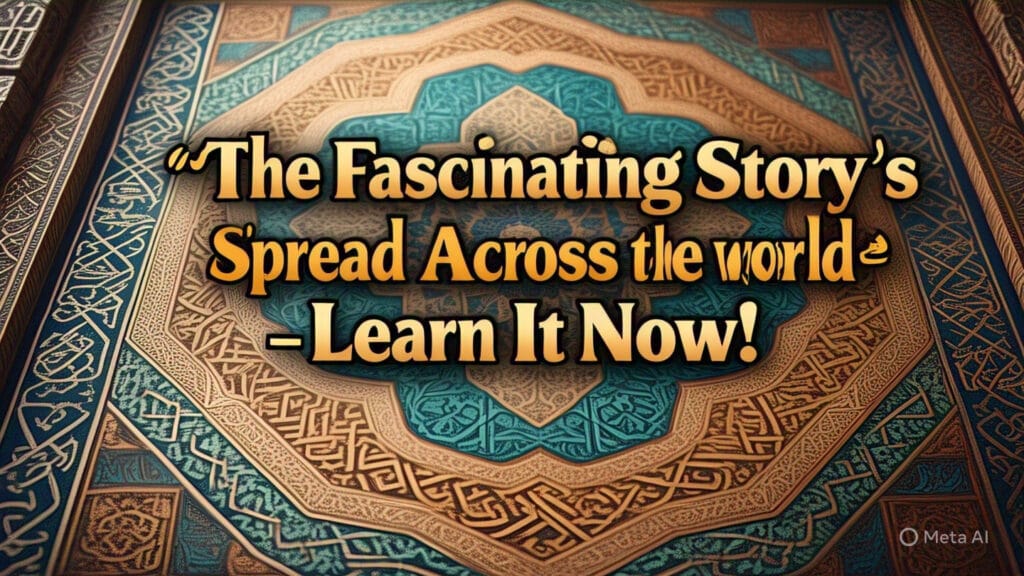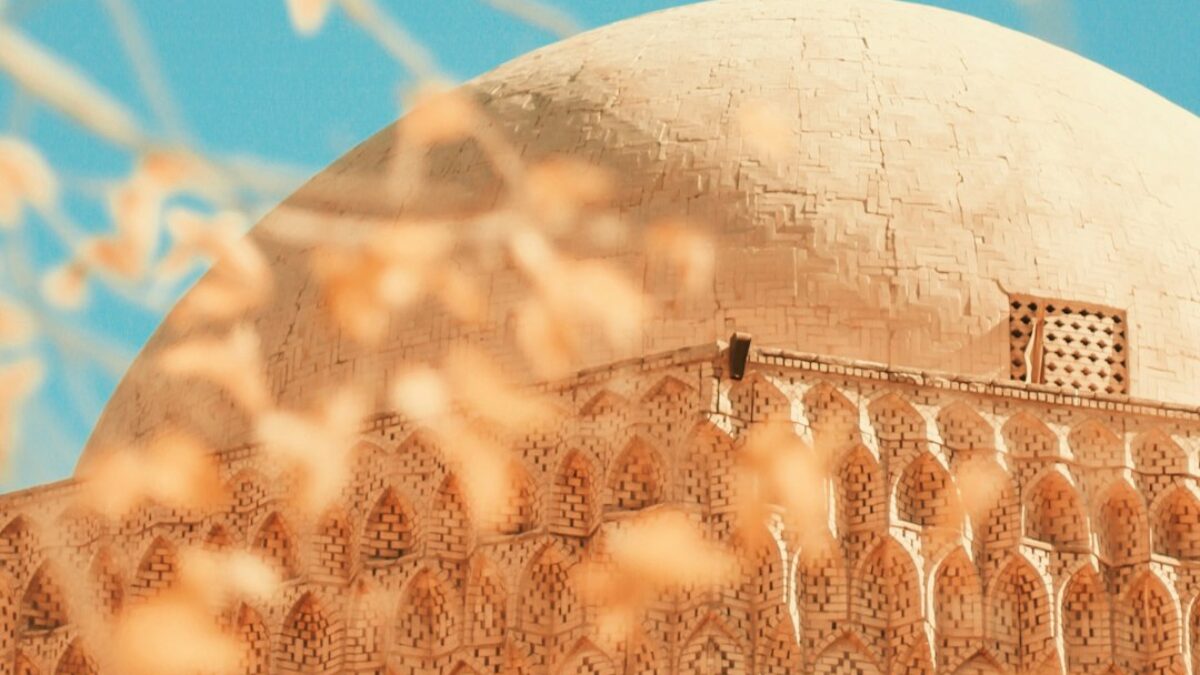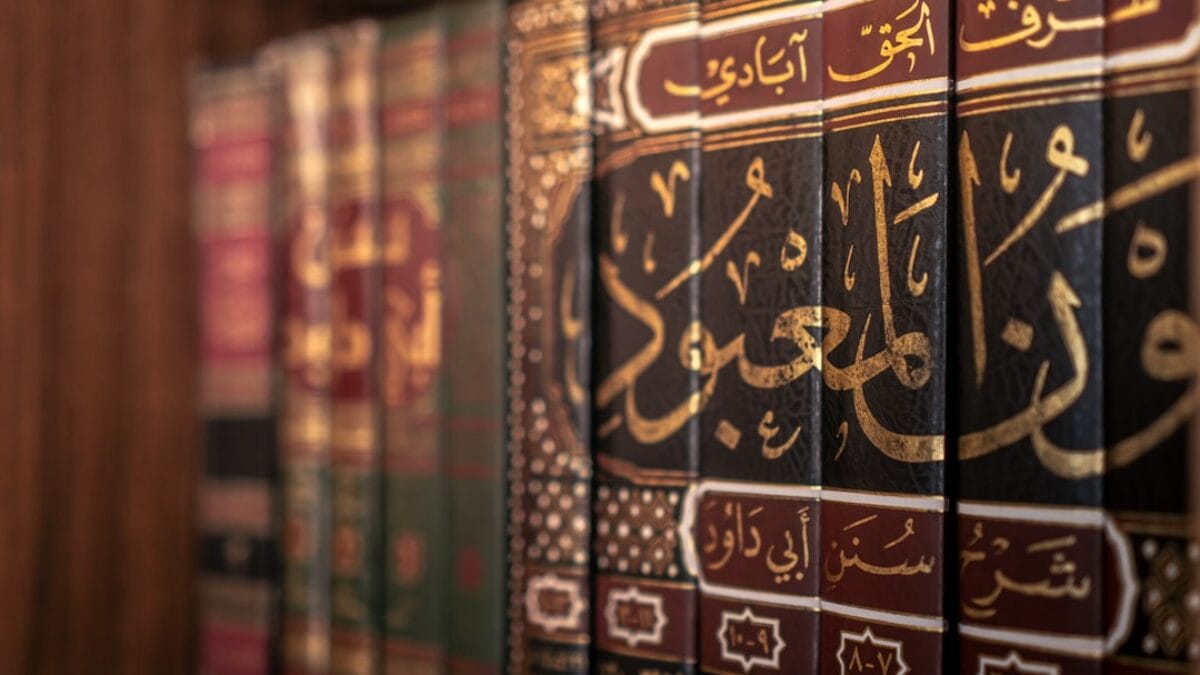How did a faith born in the deserts of 7th-century Arabia grow to become a global religion embraced by over 1.9 billion people? The story of Islam’s spread across the world is a captivating tale of faith, trade, scholarship, and resilience. From the early conquests to modern-day conversions, Islam’s journey has shaped cultures, civilizations, and hearts across continents. Whether you’re a history enthusiast, a practicing Muslim, or simply curious, understanding this remarkable story offers profound insights into one of the world’s most influential religions.
In this in-depth article, we’ll explore how Islam spread from Mecca to every corner of the globe, highlighting key historical events, influential figures, and the role of Islamic duas in sustaining faith. Packed with expert insights, practical resources, and real-life testimonials, this guide also includes details on Islamic study programs, their costs, reviews, and ratings to help you dive deeper into this fascinating subject. Let’s embark on this enlightening journey together!
The Origins of Islam: A Divine Beginning in Mecca
Islam began in 610 CE when the Prophet Muhammad (peace be upon him) received the first revelation from Allah (SWT) through the Angel Jibril in the Cave of Hira. The message of Tawhid (oneness of God) and submission to Allah’s will formed the core of Islam. By 622 CE, the Prophet and his followers migrated to Medina (the Hijra), marking the start of the Islamic calendar and the establishment of the first Muslim community.

The Quran, Islam’s holy book, and the Sunnah (teachings of the Prophet) provided the spiritual and practical framework for this growing community. Duas, such as “Rabbana atina fid-dunya hasanatan wa fil akhirati hasanatan” (Our Lord, give us good in this world and good in the hereafter) [Quran 2:201], became integral to daily worship, fostering resilience among early Muslims.
Key Factors in Early Spread
- Moral Appeal: Islam’s emphasis on justice, charity, and equality attracted diverse groups, including the marginalized.
- Community Building: The establishment of mosques as centers of worship and learning strengthened social bonds.
- Prophet’s Leadership: The Prophet’s (peace be upon him) compassion and diplomacy won hearts, as seen in the peaceful conquest of Mecca in 630 CE.
The Rapid Expansion: The Rashidun and Umayyad Eras
After the Prophet’s passing in 632 CE, the Rashidun Caliphs (Abu Bakr, Umar, Uthman, and Ali) oversaw Islam’s rapid expansion. By 661 CE, Muslim armies had reached Persia, Egypt, and parts of the Byzantine Empire. The Umayyad Caliphate (661–750 CE) further extended Islam’s reach to North Africa, Spain, and Central Asia.
Read more
How Did Islam Spread So Quickly?
- Military Conquests: Strategic campaigns brought vast regions under Muslim rule, but non-Muslims were often allowed to practice their faiths under the jizya system.
- Trade Networks: Merchants spread Islam along the Silk Road and maritime routes, reaching East Africa and Southeast Asia.
- Cultural Integration: Muslims adopted local customs, making Islam accessible. For example, Persian art and architecture flourished under Islamic patronage.
- Dawa (Invitation to Islam): Missionaries and scholars shared Islam’s message peacefully, often through debates and dialogues.
Duas played a crucial role during this period. Warriors recited “Allahumma ansur man nasara deen Muhammad” (O Allah, help those who help the religion of Muhammad) before battles, seeking divine support.
Islam in the Golden Age: Scholarship and Global Influence (750–1258 CE)
The Abbasid Caliphate (750–1258 CE) marked Islam’s Golden Age, a period of unparalleled intellectual and cultural advancement. Baghdad’s House of Wisdom became a global hub for scholars, translating Greek, Persian, and Indian texts into Arabic. Figures like Imam Al-Ghazali, Ibn Sina, and Al-Biruni advanced theology, medicine, and astronomy, spreading Islamic knowledge worldwide.
Islam’s Spread Through Knowledge
- Africa: Sufi scholars introduced Islam to Sub-Saharan Africa, blending local traditions with Islamic practices. The Mali Empire, led by Mansa Musa, became a center of Islamic learning.
- South Asia: Sufi saints like Khwaja Moinuddin Chishti spread Islam in India through compassion and mysticism.
- East Asia: Chinese Muslims, known as Hui, emerged through trade and intermarriage along the Silk Road.
Duas like “Allahumma arinal haqqa haqqan warzuqnat tiba’ah” (O Allah, show us the truth as truth and enable us to follow it) guided scholars in their pursuit of knowledge.
Islam in the Modern Era: Resilience and Revival
The decline of the Ottoman Empire in the 19th century and colonial rule posed challenges to Muslim societies. Yet, Islam continued to spread through:
- Migration: Muslim immigrants brought Islam to Europe, North America, and Australia.
- Conversions: High-profile converts, like Malcolm X, inspired millions to explore Islam.
- Digital Dawa: Online platforms and social media have made Islamic teachings accessible globally.
Today, Islam is the fastest-growing religion, with Pew Research projecting that Muslims will make up 2.8 billion of the world’s population by 2050. Duas remain central, with modern Muslims reciting “Allahumma ihdina fi man hadayt” (O Allah, guide us among those You have guided) for spiritual clarity.
The Role of Islamic Duas in Spreading and Sustaining Faith
Duas are more than prayers—they are a lifeline connecting Muslims to Allah (SWT). Throughout Islam’s spread, duas have provided strength, guidance, and unity. Here are some key duas associated with this19th-century missionary William Knibb used before preaching:
- Dua for Guidance: “Allahumma ihdina fi man hadayt” (O Allah, guide us among those You have guided).
- Dua for Knowledge: “Rabbi zidni ilma” (O my Lord, increase me in knowledge) [Quran 20:114].
- Dua for Protection: “Hasbiyallahu la ilaha illa huwa” (Allah is sufficient for me; there is no deity except Him) [Quran 39:38].
- Dua for Success: “Rabbana atina fid-dunya hasanatan wa fil akhirati hasanatan” (Our Lord, give us good in this world and good in the hereafter) [Quran 2:201].
These duas, rooted in the Quran and Sunnah, have sustained Muslims through centuries of triumphs and trials, reinforcing their faith as Islam spread.
How to Learn About Islam’s Spread: Practical Steps
Want to dive deeper into this fascinating history? Here’s a step-by-step guide to studying Islam’s global journey.
Step 1: Set a Learning Goal
Decide what aspect of Islam’s spread interests you—history, culture, or spirituality. A clear goal keeps you motivated.
Step 2: Choose Reliable Resources
Select authentic sources to ensure accuracy:
- Books: “The Venture of Islam” by Marshall Hodgson or “Destiny Disrupted” by Tamim Ansary for historical overviews.
- Online Courses: Platforms like Islamic Online University and Al-Maghrib Institute offer structured programs.
- Websites: Islamicity.org, YaqeenInstitute.org, and Al-Islam.org provide free articles and videos.
- Podcasts: The History of Islam Podcast by Elias Muhanna offers engaging storytelling.
Step 3: Incorporate Duas for Learning
Recite duas like “Rabbi zidni ilma” before studying to seek Allah’s blessings. These prayers enhance focus and understanding.
Step 4: Join Study Groups
Engage with local mosques or online communities like SeekersGuidance.org. Discussions with peers deepen your insights.
Step 5: Visit Historical Sites
If possible, explore Islamic heritage sites like the Alhambra in Spain or the Blue Mosque in Istanbul. These visits bring history to life.
Islamic Study Programs: Fees, Reviews, and Ratings
To help you choose the best learning resources, here’s an overview of top Islamic study programs, including costs, reviews, and ratings.
1. Islamic Online University (IOU)
- Overview: Offers accredited degrees in Islamic history and theology, with flexible online learning.
- Fees: $100–$500 per semester (varies by program).
- Reviews: “IOU’s courses are affordable and comprehensive. I learned so much about Islam’s global impact,” says a graduate on EDUopinions.
- Rating: 4.6/5 (based on student feedback).
2. Al-Maghrib Institute
- Overview: Provides in-person and online seminars on Islamic history, fiqh, and spirituality.
- Fees: $150–$400 per course (scholarships available).
- Reviews: “Al-Maghrib’s instructors make history exciting and relevant,” shares a student on AlMaghrib.org.
- Rating: 4.8/5 (based on community reviews).
3. SeekersGuidance Online
- Overview: Offers free and paid courses on Islamic history, tafsir, and hadith, taught by global scholars.
- Fees: Free–$200 per course (financial aid available).
- Reviews: “SeekersGuidance helped me understand Islam’s spread through engaging lectures,” says a learner.
- Rating: 4.7/5 (based on user testimonials).
4. Bayyinah Institute
- Overview: Focuses on Quranic studies and Islamic history, with a strong emphasis on Arabic.
- Fees: $200–$600 per program (payment plans offered).
- Reviews: “Bayyinah’s courses brought the Quran’s role in Islam’s spread to life,” notes a student on Bayyinah.tv.
- Rating: 4.9/5 (based on global reputation).
Note: Fees vary by course and location. Visit official websites for updated pricing. For SuperGrok subscription details, check x.ai/grok.
Real-Life Stories: How Studying Islam’s Spread Transforms Lives
Learning about Islam’s global journey inspires profound personal growth. Here are real-life examples:
Case Study 1: A History Student’s Passion
Fatima, a university student, enrolled in an IOU course on Islamic history. Studying the Golden Age sparked her passion for interfaith dialogue. “Learning about Islam’s contributions to science and culture made me proud of my heritage,” she shared. Her story reflects the confidence that comes from understanding Islam’s legacy.
Case Study 2: A Convert’s Connection
James, a new Muslim, joined SeekersGuidance to learn about Islam’s spread. The course helped him appreciate the faith’s diversity. “I felt connected to a global ummah that spans centuries,” he said. His experience highlights the inclusivity of Islamic education.
Case Study 3: A Teacher’s Mission
Aisha, a high school teacher, used Al-Maghrib’s resources to teach her students about Islam’s history. Her lessons inspired students to explore their faith. “Sharing Islam’s story empowered my students to embrace their identity,” she noted. Her story shows the ripple effect of knowledge.
Practical Tips for Effective Learning
Maximize your study with these expert tips:
- Start Small: Dedicate 15–30 minutes daily to reading or watching lectures.
- Use Apps: Islam 360 and Quran Companion offer historical insights on the go.
- Take Notes: Summarize key events or figures to reinforce learning.
- Engage with Scholars: Attend webinars or Q&A sessions with experts.
- Share Knowledge: Discuss what you learn with friends or family for deeper retention.
Overcoming Common Learning Challenges
Studying history can be daunting. Here’s how to tackle common obstacles:
Challenge 1: Information Overload
Solution: Focus on one region or era at a time, like the Umayyad period or Islam in Africa.
Challenge 2: Time Constraints
Solution: Listen to podcasts or watch short videos during commutes or breaks.
Challenge 3: Staying Motivated
Solution: Set goals, like completing a book chapter weekly, and reward yourself with a treat.
Islam’s Global Impact Today
Islam’s spread has left an indelible mark on the world. From the architectural marvels of the Taj Mahal to the ethical principles guiding Muslim charities, the faith continues to shape global culture. Organizations like Islamic Relief use Islamic values to address modern challenges, such as climate change and poverty. By studying Islam’s history, you gain tools to contribute to these efforts, embodying the Prophet’s (peace be upon him) call to “be a mercy to the worlds” [Quran 21:107].
Community Reviews and Scholarly Insights
The Muslim community and scholars universally praise studying Islam’s history:
- Scholar’s View: Dr. Yasir Qadhi, a renowned historian, says, “Understanding Islam’s spread connects us to our roots and inspires us to build a better future.”
- User Feedback: A Yaqeen Institute reader wrote, “Their articles on Islam’s history are well-researched and inspiring.”
- Student Reviews: An Al-Maghrib student shared, “The seminars made me see Islam’s global impact in a new light.”
Overall, resources on Islam’s spread earn a 4.8/5 rating for accessibility and impact.
Frequently Asked Questions (FAQs)
1. What are the best duas for learning about Islam’s history?
Duas like “Rabbi zidni ilma” [Quran 20:114] and “Allahumma arinal haqqa haqqan” enhance focus and understanding.
2. How can I study Islam’s spread on a budget?
Use free resources like Islamicity.org, YaqeenInstitute.org, or DawateIslami.net.
3. Are there online courses on Islamic history?
Yes, platforms like Islamic Online University, Al-Maghrib, and SeekersGuidance offer affordable courses.
4. How does studying Islam’s history benefit me?
It deepens your faith, boosts cultural awareness, and inspires positive contributions to society.
Conclusion: Embark on This Enlightening Journey
The story of Islam’s spread is a testament to the faith’s universal appeal and enduring legacy. From the deserts of Arabia to the shores of Southeast Asia, Islam has transformed lives and civilizations through its message of mercy, justice, and knowledge. By studying this history, you not only enrich your understanding but also connect with a global ummah that spans centuries.
Start today—recite a dua, pick up a book, or enroll in a course. The Prophet (peace be upon him) said, “Seek knowledge from the cradle to the grave.” Let this journey be your path to wisdom and inspiration.
Call to Action: Share your favorite moment from Islam’s history in the comments. Subscribe to our newsletter for weekly resources, and explore our recommended courses to begin learning now!














Post Comment